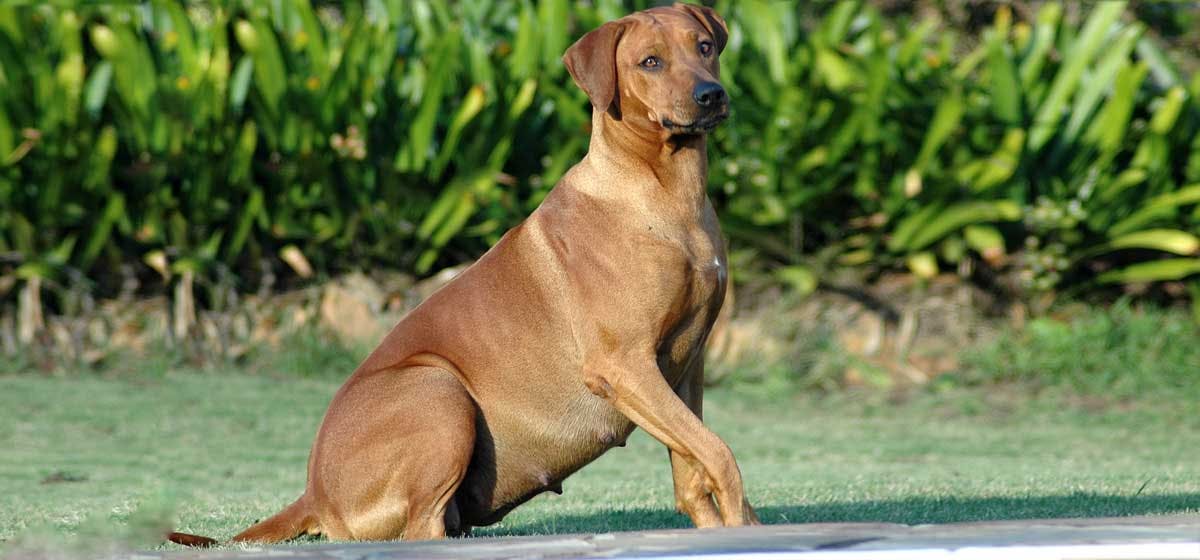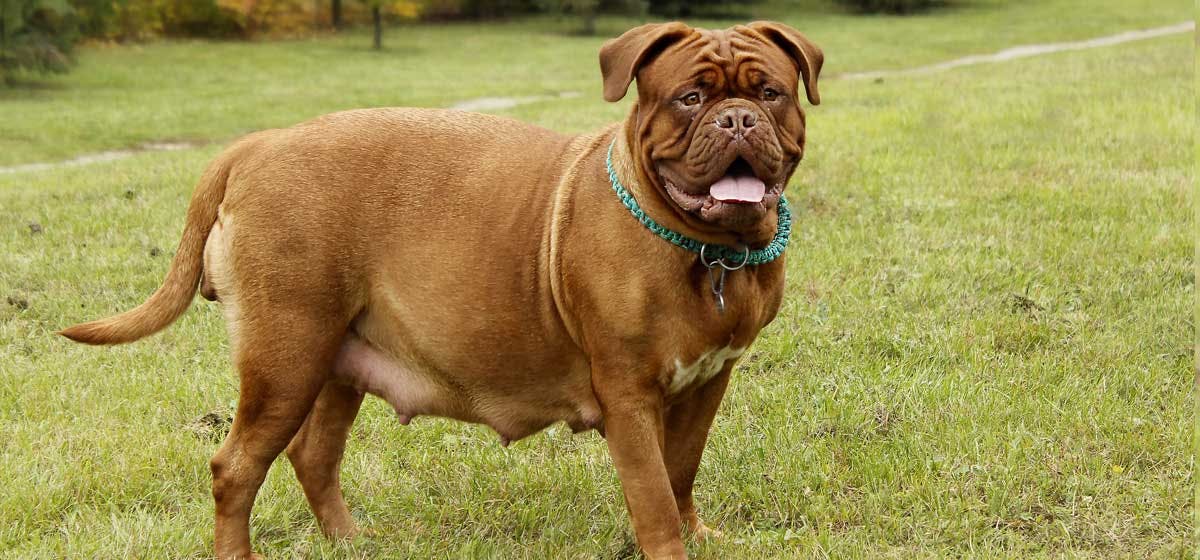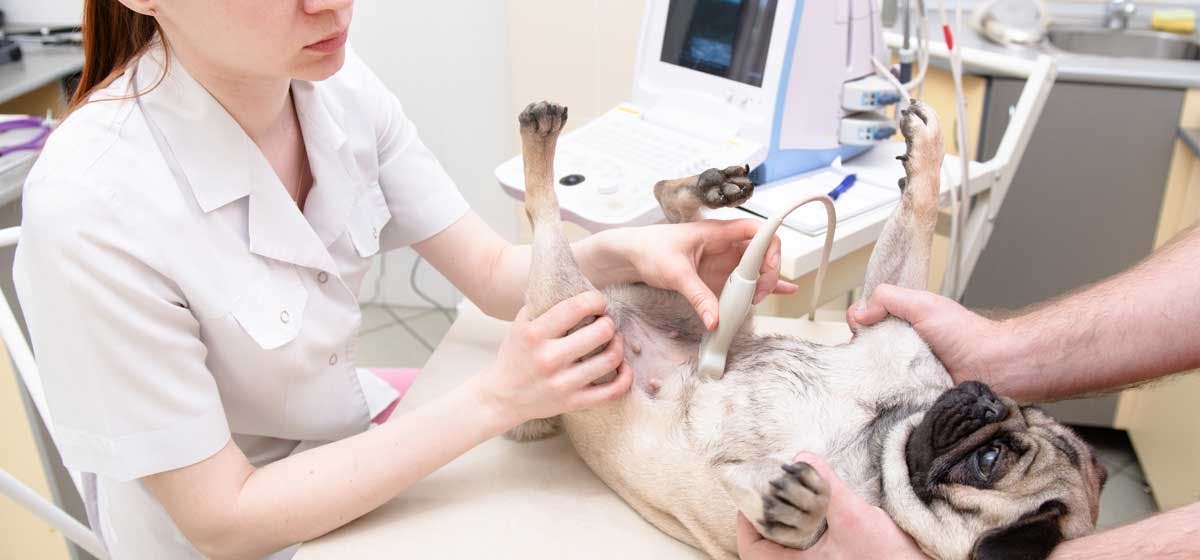At What Age Can Dogs Have Babies
Introduction
Updated by Mel Lee-Smith | February 7, 2020
Puppies are literally the cutest thing on the planet. The toebeans! The puppy breath! The high-pitched yips! There's a whole lot to love — but pet parents who welcome a litter of precious pups into the world will certainly have their paws full when it comes to caring for Mom and her fur-babies.
At what age can dogs have puppies? Well, that depends on their size and breed. Your dog can get pregnant during the very first heat, or estrus cycle. Though most dogs experience estrus around 6 months of age, some small breeds can go into heat at four months old, so it won't be long before your little princess is able to have pups of her own! (Breeding during the first heat isn't recommended, though, since the pup is also still growing.) Larger breeds may not go into heat for the first time until they're 12 to 18 months old. Generally speaking, the larger the dog, the longer it will take to reach sexual maturity. However, every dog is different, and it may take a couple of years before the cycle regulates.
Female dogs can continue to get pregnant and give birth throughout their lives. For dogs 7 years and older, the time between cycles may increase, and health problems may make pregnancy more dangerous. Keep reading to discover the history and science of pregnancy in dogs as well as some tips and tricks for breeding responsibly.

Signs that Your Dog is Able to Get Pregnant
You'll know Princess is able to get pregnant when she goes into heat for the first time. Also known as estrus, this stage of the reproductive cycle occurs roughly every 6 months and lasts from 2 to 4 weeks. Female dogs are only able to become pregnant during this time.
Just like human females, your hound may experience behavioral changes and other symptoms throughout all four stages of estrus. Behavioral changes typically occur during proestrus, which occurs just before the dog is most fertile. When your dog starts "flagging" — or moving her tail to the side to signal to males that she's ready to mate — you'll know she's ready! Vaginal bleeding and watery discharge also indicate estrus.
Body Language
Below are some signs your pooch will show if she's able to get pregnant:
- Alert
- Tail tucking
- Tail up
- Stiff tail
Other Signs
Below are a few more signs that your female dog is in heat:
- Vaginal bleeding and/or discharge
- Urinating frequently
- Aggression toward female dogs
- Restlessness
- Extra cuddly with owner
The History of Dog Pregnancy

Did you know that dogs and gray wolves evolved from the same common ancestor between 20,000 and 40,000 years ago? To begin a discussion of the history of dog breeding, we'll need to rewind some 14,000 years, when humans first began domesticating wolves.
While the exact process of domestication is a hot debate in the scientific sphere, it's thought that wild wolves inadvertently initiated the domestication process. (Indeed, some people believe we didn't domesticate dogs, but dogs domesticated us!) Packs of wolves hung around hunter-gatherer tribes in hopes of finding food. Tame, well-behaved wolves were better at scavenging scraps than their aggressive pack members. Over time, those wolves evolved to be friendly toward humans. In exchange for food, the packs protected and assisted humans in hunting.
However, these dogs weren't quite the cuddly and well-groomed puppers who like to play fetch and snooze on our couches. They were free to roam, and their physical attributes were more or less uniform. So how did those loyal strays evolve into the 400-plus dog breeds we know and love so much today? It all has to do with selective breeding.
Around 9,000 years ago in southern Asia, humans figured out we could breed dogs to enhance certain traits that benefitted us. At first, we began breeding dogs for agility and hunting prowess. These were the first herding and hunting dogs. (Fun fact: humans living in the ancient Arctic successfully bred their dogs to help hunt down polar bears!)
Fast forward to London in the 19th century, where we discovered dogs were more than just our coworkers — they were our friends! (And super cute ones at that.) During the Industrial Revolution, dogs lived comfy lives inside private homes. As wealthy British aristocrats began experimenting with selective breeding, kennel clubs were established to keep track of the new breeds that competed in fashionable dog shows.
Long story short, we can thank Britain's upper-class Victorians for beautiful dog breeds like the Golden Retriever and English Setter. And the rest, as they say, is history!
The Science of Dog Pregnancy

Dogs are most likely to become pregnant during the second stage of estrus. Here's a brief overview of this stage:
- Typically lasts between 5 and 10 days, but may take up to 24 days.
- Blood flow lessens or stops — discharge usually changes color from brown to clear.
- Hormonal changes in the body take place and ovulation occurs.
- Male dogs can detect the female's pheromones from miles away.
- Your dog will signal to males that she's ready to mate by holding the tail to the side.
- Female dogs in heat may become aggressive toward other females, and females not in heat may be aggressive toward them.
- Your vet can conduct a vaginal smear and blood test to determine the optimal time to breed your dog.
How to Tell If Your Dog is Pregnant
Apart from obvious signs like weight gain, swollen nipples, and behavioral changes, the best way to determine if your dog is pregnant is to go to the vet. Your trusted veterinarian can use hormone tests, x-rays, ultrasounds, and palpation to determine if Peanut has a sweet litter of puppies on the way!
How Long Do Dogs Stay Pregnant?
Pregnancy may last anywhere from 8 to 10 weeks after conception, but typically lasts 9 weeks.
What Are the Stages of Dog Pregnancy?
- Weeks 1 - 3: The embryos embed into the uterine wall around week 2. Your dog may not show any symptoms during the first few weeks of pregnancy.
- Week 4: An ultrasound will detect the puppies' heartbeat and physical development. Around day 30, the eyes are visible. Your dog may have clear discharge along with other symptoms, such as increased appetite, lethargy, swollen nipples, vomiting, and affectionate behavior.
- Week 5: Sweet little toebeans are visible on an ultrasound around day 35. Symptoms are more apparent and include weight gain, more frequent urination, and decreased appetite.
- Week 6: Keep your eyes peeled to see if you can spot the puppies moving around!
- Week 7: Mom is preparing to give birth and won't eat much. She'll also be restless and may start pacing or digging. Puppies will move down into the birth canal.
- Week 8: Expect to welcome a litter of precious puppies around day 63!
What Are the Stages of Labor in Dogs?
Labor typically lasts between 3 and 12 hours. Contractions begin 12 to 24 hours prior to labor. Dogs will deliver healthy pups every 30 minutes to an hour. Delivery of each individual pup shouldn't last longer than 2 hours. After your dog has delivered the pups, the placenta will follow. If your dog's labor lasts longer than 24 hours, contact your vet immediately.
Training Dogs to Get Pregnant

There's no need to train your dog to get pregnant — puppy love is a natural instinct! But there are certain things you should do if you're looking to breed your dog. Just remember, taking care of a pregnant dog and newborn puppies is a daunting task and a big commitment. However, the effort will be well worth it when you welcome that sweet pack of puppers into the world!
The first thing you should do is ensure the female dog is ready to breed. A female dog can breed during her very first heat. However, most dog breeders actually wait until a female dog has gone through 3 or 4 menstruation cycles. That way, the female dog is fully physically ready to endure the taxing experience of pregnancy.
Here are a few pointers for breeding your dog responsibly:
- Determine what you're breeding for. Are you planning to go the purebred route? Want to breed a litter of sledding, hunting, or herding dogs? Determine the traits you're breeding for before moving on to the next step.
- Do your homework. We can't "pawssibly" cover everything you need to know about dog breeding in one short article, so research information on your dog's breed and health as much and as often as you can.
- Find a suitable mate. You want to choose a male dog with the right temperament and traits. Be sure to research potential health issues or birth defects of the potential mate's breed. Once you've chosen a mate, you might want to create a breeding agreement with their owner.
Before pairing up the male and female dogs, take them both to the vet to make sure that each party is in good health. Let your female dog spend time with the male during the second stage of estrus when she's most fertile, a period of about 5 to 10 days.
Don't worry, this process doesn't have to be too procedural. You can hang out, play, cuddle, and walk your dogs the way you usually do. A happy dog means a healthy dog! And healthy dogs make more healthy dogs. So be sure to keep both the female and male dogs on a very healthy and wholesome diet while they're in the breeding process.
How to React When Your Dog is Pregnant
-
Provide excellent nutrition.
-
Monitor your dog closely.
-
Take your dog to the vet if you suspect she's pregnant.
-
Schedule regular vet appointments to ensure she's healthy.
-
Cuddle your dog when she is looking for affection!
Safety Tips for Dogs Able to Get Pregnant
-
Be sure the female dog is healthy and of an appropriate age.
-
If you don't want your dog to get pregnant, get her spayed or keep her out of reach of male dogs.
-
Keep your female dog away from other potentially aggressive females while in heat.
-
Monitor your dog's symptoms carefully and consult your vet immediately if you notice a pus discharge from the vagina.
![]()
Written by a Corgi lover Simone DeAngelis
Published: 02/02/2018, edited: 04/06/2020
At What Age Can Dogs Have Babies
Source: https://wagwalking.com/sense/what-age-can-dogs-get-pregnant
0 Response to "At What Age Can Dogs Have Babies"
Post a Comment